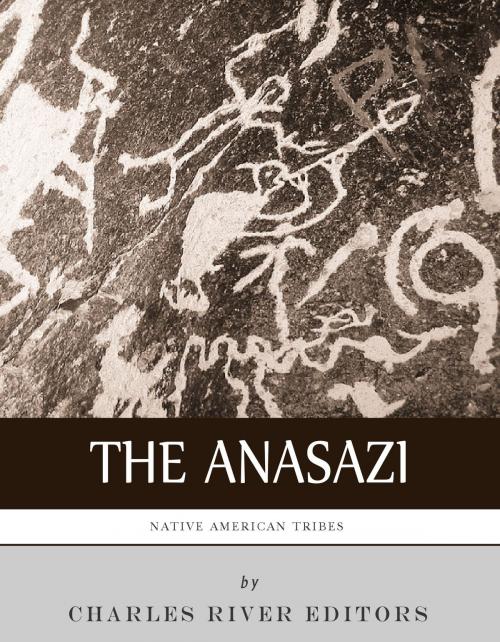Native American Tribes: The History and Culture of the Anasazi (Ancient Pueblo)
Nonfiction, History, Americas, Native American, United States| Author: | Charles River Editors | ISBN: | 9781475323900 |
| Publisher: | Charles River Editors | Publication: | June 7, 2013 |
| Imprint: | Language: | English |
| Author: | Charles River Editors |
| ISBN: | 9781475323900 |
| Publisher: | Charles River Editors |
| Publication: | June 7, 2013 |
| Imprint: | |
| Language: | English |
*Includes pictures of Anasazi art, artifacts, and ruins. *Explains the origins, history, religion, and social structure of the Anasazi*Explains the relationship between the Anasazi and the Zuni*Includes a Bibliography for further reading.*Includes a Table of Contents.From the “Trail of Tears” to Wounded Knee and Little Bighorn, the narrative of American history is incomplete without the inclusion of the Native Americans that lived on the continent before European settlers arrived in the 16th and 17th centuries. Since the first contact between natives and settlers, tribes like the Sioux, Cherokee, and Navajo have both fascinated and perplexed outsiders with their history, language, and culture. In Charles River Editors Native American Tribes series, readers can get caught up to speed on the history and culture of North Americas most famous native tribes in the time it takes to finish a commute, while learning interesting facts long forgotten or never known.When European settlers and later American settlers came into contact with Native American tribes on the continent, they were frequently unable to differentiate between the subcultures within individual tribes, leading to all kinds of misunderstandings. When the Spanish came into contact with different tribes in the Southwest, they categorized several of them as Pueblo. Thus, while most Americans have heard of the Pueblo and Navajo, many remain unfamiliar with distinctions within the tribes. The Pueblo fascinated those who came across their settlements, especially those located in desert regions and the sides of cliffs that involved the use of adobe mud, stone, carving homes out of cliffs. One such settlement, Oraibi, was created around 1100 A.D. and remains one of the oldest continuously inhabited settlements in North America. The Spanish were so intrigued by the structure of the communities that they gave the natives the name Pueblo, a term they used to measure certain sizes for their own settlements.Todays Puebloan tribes are descended from tribes known as the “Ancestral Puebloan People”, one of which was the Anasazi. The name Anasazi came from their enemies; it is a Navajo word that means “enemy ancestor”. While that name understandably continues to offend the descendants of the Anasazi, it also underscores that there is still a lot of uncertainty regarding the history of the Anasazi. It is still unclear what the Anasazi called themselves, and though they resided near the “Four Corners” area of Utah, Arizona, Colorado and New Mexico for more than 700 years, they mysteriously abandoned their settlements shortly after they truly began to flourish around 1050-1150 A.D. Despite the unknowns, it is likely that all of the Puebloan tribes today are at least partially descended from the Anasazi, particularly the Zuni. Through ongoing research and Zuni oral traditions, archaeologists and anthropologists continue to try to piece together the history and culture of the Anasazi, even as their ruins continue to fascinate tourists nearly a millennium after they were constructed. Native American Tribes: The History and Culture of the Anasazi comprehensively covers the facts, mysteries, and theories surrounding the ancient Native Americans who built the elaborate and impressive settlements in the cliffs and deserts of the Southwest. Along with pictures and a bibliography, you will learn about the Ancient Pueblo like you never have before, in no time at all.
*Includes pictures of Anasazi art, artifacts, and ruins. *Explains the origins, history, religion, and social structure of the Anasazi*Explains the relationship between the Anasazi and the Zuni*Includes a Bibliography for further reading.*Includes a Table of Contents.From the “Trail of Tears” to Wounded Knee and Little Bighorn, the narrative of American history is incomplete without the inclusion of the Native Americans that lived on the continent before European settlers arrived in the 16th and 17th centuries. Since the first contact between natives and settlers, tribes like the Sioux, Cherokee, and Navajo have both fascinated and perplexed outsiders with their history, language, and culture. In Charles River Editors Native American Tribes series, readers can get caught up to speed on the history and culture of North Americas most famous native tribes in the time it takes to finish a commute, while learning interesting facts long forgotten or never known.When European settlers and later American settlers came into contact with Native American tribes on the continent, they were frequently unable to differentiate between the subcultures within individual tribes, leading to all kinds of misunderstandings. When the Spanish came into contact with different tribes in the Southwest, they categorized several of them as Pueblo. Thus, while most Americans have heard of the Pueblo and Navajo, many remain unfamiliar with distinctions within the tribes. The Pueblo fascinated those who came across their settlements, especially those located in desert regions and the sides of cliffs that involved the use of adobe mud, stone, carving homes out of cliffs. One such settlement, Oraibi, was created around 1100 A.D. and remains one of the oldest continuously inhabited settlements in North America. The Spanish were so intrigued by the structure of the communities that they gave the natives the name Pueblo, a term they used to measure certain sizes for their own settlements.Todays Puebloan tribes are descended from tribes known as the “Ancestral Puebloan People”, one of which was the Anasazi. The name Anasazi came from their enemies; it is a Navajo word that means “enemy ancestor”. While that name understandably continues to offend the descendants of the Anasazi, it also underscores that there is still a lot of uncertainty regarding the history of the Anasazi. It is still unclear what the Anasazi called themselves, and though they resided near the “Four Corners” area of Utah, Arizona, Colorado and New Mexico for more than 700 years, they mysteriously abandoned their settlements shortly after they truly began to flourish around 1050-1150 A.D. Despite the unknowns, it is likely that all of the Puebloan tribes today are at least partially descended from the Anasazi, particularly the Zuni. Through ongoing research and Zuni oral traditions, archaeologists and anthropologists continue to try to piece together the history and culture of the Anasazi, even as their ruins continue to fascinate tourists nearly a millennium after they were constructed. Native American Tribes: The History and Culture of the Anasazi comprehensively covers the facts, mysteries, and theories surrounding the ancient Native Americans who built the elaborate and impressive settlements in the cliffs and deserts of the Southwest. Along with pictures and a bibliography, you will learn about the Ancient Pueblo like you never have before, in no time at all.















